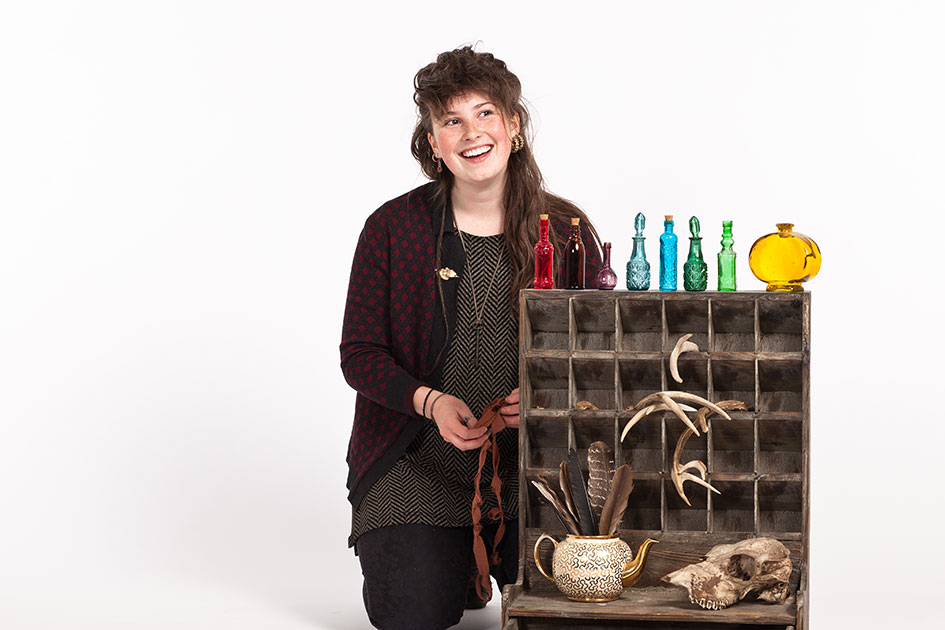Erin Guy
Art/Religion
Hometown: Lake Stevens, Washington
Advisers: Prof. William Diebold [art 1987–] and Prof. Ken Brashier [religion 1998–]
Thesis: “Monstrance in Miniature: The Granville Manuscript’s Painted Windows on the Crystal Palace”
What it’s about: I used the Roman Catholic, illuminated Granville Manuscript (1854) and its three miniature paintings of the Crystal Palace to look at if and how the valences of medieval styles in Victorian England relate to the 1851 Great Exhibition, often associated with an ahistorical forward-progressing conception of modernity.
What it’s really about: How miniatures are portals into fairy worlds.
Who I was when I got to Reed: Surly and overserious, sick of making art, starved for intellectual engagement, ready to save the world.
Influential book: Basically a long digression on the images that appear in cross sections of stones, The Writing of Stones by Roger Caillois is about the aesthetic imperative in geologic entities. It’s out of print and totally expensive.
Favorite spot: The chapel is beautiful. I’ve experienced some of the most incredible music in that space.
Random thoughts: I came to Reed as a religion major, specifically interested in Christian mysticism. I was interested in working with Prof. Mike Foat, who studies early Christianity, Coptic, and Greek—that sort of thing. I took a class called Imperial Christianity with him my freshman year. It was terrifying, because I was not prepared to be in a class like that. It was exactly what I wanted but paralyzing at the same time. I loved it.
Cool stuff I did: I made a giant magic lantern called a phantasm-o-scope for Reed Arts Week. Went to Beijing with an art history class. Learned that doing art history is an art, to trust my ideas, and to speak up.
How Reed changed me: My best friends and biggest inspirations emerged during my time at Reed. It opened my eyes to a flavor of generosity, brilliance, and creativity that I have never experienced anywhere else.
Scholarships, awards, or financial aid: Jo Desrosier memorial scholarship, Jill L. Renshaw memorial scholarship, Hawkins memorial scholarship, Lillie P. Wyss memorial scholarship, Reed grant, and a Reed Opportunity Grant. I am so grateful for the financial support that I’ve received from Reed over the last four years. It’s astonishing.
Something I would tell prospies: I really benefited from trying to see in different professors’ research something that was interesting to me and potentially could unlock more doors. I was interested in working collaboratively. I wanted to find something that professors would take a personal interest in as well, because I think that kind of dialogue is important.
What’s next: Presenting thesis work with Prof. Diebold at the Middle Ages in the Modern World conference at the University of St. Andrews in Scotland.
Thesis expanded: William Diebold [art history 1987-] took me to Special Collections and showed me the Granville Manuscript, which is based on a number of medieval illumination styles from a range of historical periods. My thesis is specifically interested in three miniatures of the Crystal Palace from the Great Exhibition of 1851. “There’s this conference happening next summer,’ William told me. “I’ve already submitted an abstract about this manuscript and it was accepted. If you want to do this, you could go in my place.” His thinking I would be interested in this thing and that I might have something interesting to say about it that I could present at a conference was serendipitous and an amazing gift. It was inspiring to get that encouragement from him and I had such a great time working with the manuscript and on the Great Exhibition.
